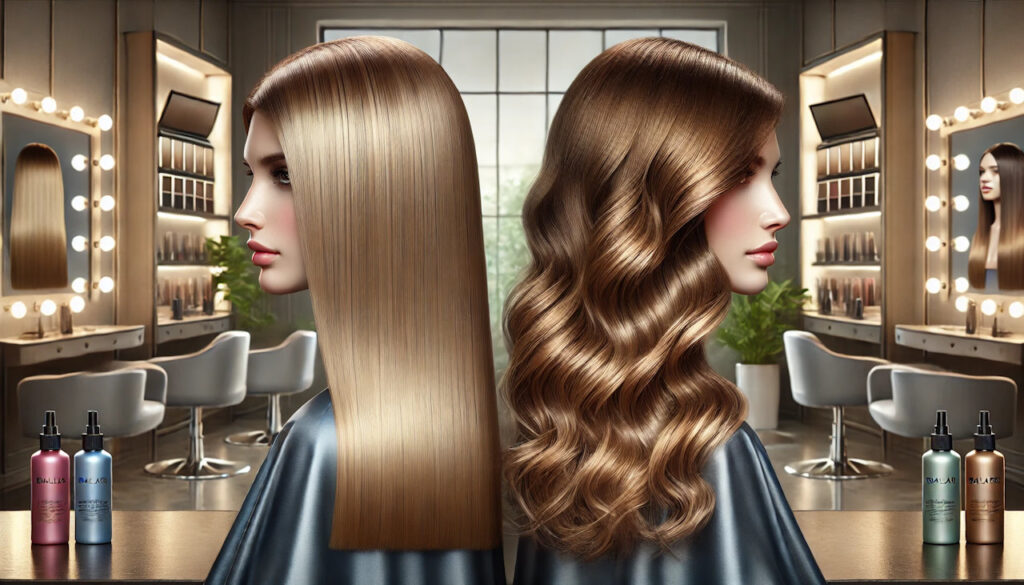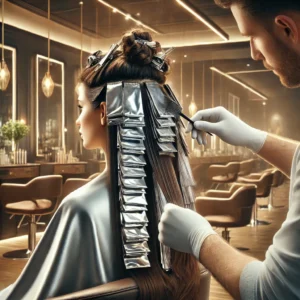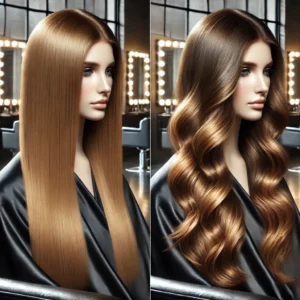Ultimate Guide to Selecting the Perfect Hair Highlighting Technique: Foiling vs. Balayage
In the realm of hair transformation, foiling and balayage stand out as two premier techniques for adding stunning highlights to your hair. While both methods aim to enhance your overall look, they differ significantly in application and the resulting aesthetic. Foiling is a traditional method where specific strands of hair are carefully wrapped in foil after being treated with a lightener or dye, ensuring precise highlight placement. This technique is particularly favored by those who desire vibrant, well-defined results that can dramatically alter their appearance.
The accuracy of foiling results in a polished, sophisticated hairstyle, making it ideal for individuals seeking a bold transformation or a striking contrast to their natural hair color. On the other hand, balayage represents a more artistic approach, where the stylist paints color directly onto the hair, focusing on the mid-lengths and ends while allowing the roots to remain darker. This technique creates a naturally sun-kissed effect with seamless transitions, and it typically requires less frequent maintenance, appealing to those who prefer a more relaxed, lived-in style that gradually evolves over time.
Grasping these essential differences is crucial for making an informed choice that matches your unique aesthetic preferences and fits seamlessly into your daily life.

Key Considerations for Choosing Between Foiling and Balayage Techniques
- Foiling involves the meticulous wrapping of hair sections in foil to achieve sharp, uniform highlights, while <a href="https://ad4sc.com/brunette-hair-discover-its-stunning-beauty/">balayage</a> uses a freehand painting technique that results in a more organic, sun-kissed effect.
- Foiling provides advantages like consistent and controlled results along with effective lightening of hair shades; however, it may lead to noticeable regrowth and can produce a more structured, less natural look.
- In contrast, balayage is celebrated for its low-maintenance quality and its ability to blend seamlessly with your natural hair color. Nevertheless, it may present challenges such as uneven color distribution and the need for regular touch-ups to maintain its beauty.
- For individuals with dark, thick, or coarse hair, foiling can be especially beneficial if you’re aiming for a bold, high-contrast effect that stands out.
- Conversely, balayage is often better suited for fine or thin hair, providing a subtle, blended effect that minimizes the visibility of regrowth.
- To keep foiled highlights looking vibrant, it’s essential to use color-safe products, limit excessive heat styling, and schedule regular touch-up appointments with your stylist.
- For balayage, utilizing color-safe products, reducing sun exposure, and planning regular toning sessions with your stylist will help maintain the vibrancy and freshness of your look.
- When contemplating whether to choose foiling or balayage, consider your aesthetic preferences, hair type, maintenance requirements, and budget to make the most informed decision based on the strengths and weaknesses of each technique.
 Exploring the Numerous Advantages of Foiling for Eye-Catching Highlights
Exploring the Numerous Advantages of Foiling for Eye-Catching Highlights
Foiling comes with a host of compelling benefits that make it a preferred choice for those desiring vibrant, eye-catching highlights. The most significant advantage lies in its precision; each section of hair is carefully wrapped in foil, enabling accurate color application exactly where it’s needed. This level of precision is particularly advantageous for individuals with darker hair who wish to achieve substantial lift or contrast without sacrificing quality.
Moreover, the uniform appearance achieved through foiling is ideal for anyone seeking a polished and sophisticated finish. However, it’s crucial to be mindful of the potential drawbacks associated with this technique. The foiling process can be time-consuming, often requiring several hours, especially for those with longer or thicker hair. Additionally, the foils can trap heat, which accelerates the lightening process and may lead to hair damage if not monitored closely. If you have a busy lifestyle or prefer a more effortless hair care routine, you might find that foiling requires more maintenance than you are prepared to handle.
Uncovering the Benefits and Challenges of Balayage for Effortless Style
Balayage offers a wealth of advantages that appeal to individuals in search of a more natural, effortlessly chic hairstyle. One of the most notable features of this technique is its low-maintenance nature. Since balayage highlights replicate the effects of natural sun exposure, they tend to grow out gracefully, avoiding harsh lines or unsightly regrowth. This characteristic translates into fewer salon visits for touch-ups, making balayage an ideal option for those with hectic lifestyles.
However, it’s important to recognize that balayage may not provide the same level of intensity or contrast as foiling. If you’re on the hunt for bold, dramatic highlights, you might discover that balayage falls short of meeting your expectations. Additionally, the success of balayage is heavily dependent on the stylist’s expertise and artistry. Therefore, choosing an experienced professional who can accurately interpret and execute your vision is critical to achieving the results you desire.
Identifying Optimal Hair Types for Benefiting from Foiling Techniques
Foiling is particularly advantageous for specific hair types and textures. Individuals with thick or coarse hair can achieve vibrant highlights that stand out strikingly against their natural base color. The precision inherent in foiling allows for targeted color placement, enhancing the hair’s natural texture and dimension. Furthermore, those with naturally dark hair seeking significant lift or contrast often find foiling to be the most effective method available.
Even individuals with fine or thin hair can reap the benefits of foiling, as this technique can create an illusion of volume and depth. By strategically placing highlights throughout the hair, you can add dimension that makes your locks appear fuller and more dynamic. However, if your hair is excessively damaged or fragile, consulting with your stylist is essential before opting for foiling, as the process can be more taxing on delicate strands and may exacerbate existing issues.
 Discovering Ideal Hair Types for Balayage Techniques
Discovering Ideal Hair Types for Balayage Techniques
Balayage excels in its versatility and adaptability across a range of hair types, making it a favored choice for many individuals. If you have naturally wavy or curly hair, this technique can beautifully enhance your texture while delivering an effortlessly chic, sun-kissed look. The freehand application method allows for subtle transitions between colors, making it particularly suited for those seeking a natural appearance that complements their hair’s natural waves.
Straight hair also benefits from balayage, as it adds movement and dimension without overwhelming the base color. For individuals with fine hair, balayage can create an illusion of thickness by introducing depth through strategically placed highlights. However, if your hair is very dark and you desire a dramatic transformation, keep in mind that balayage may require multiple sessions to achieve the brightness you want, especially compared to the quicker results offered by foiling.
Effective Strategies for Maintaining Vibrant Foiled Highlights
Maintaining foiled highlights demands a commitment to ensuring your color remains fresh and vibrant. One of the most critical steps involves using sulfate-free shampoos and conditioners specifically formulated for color-treated hair. These specialized products work to preserve your highlights while preventing fading and damage that can occur with typical cleansing routines.
In addition to using appropriate products, incorporating a deep conditioning treatment into your hair care regimen at least once a week is essential for keeping your hair hydrated, nourished, and healthy. Regular visits to the salon are also necessary to maintain the integrity of your foiled highlights. Depending on your hair growth rate and the visibility of your regrowth, you may need touch-ups every 6 to 8 weeks. During these appointments, your stylist can refresh your highlights and ensure they blend seamlessly with your natural hair color. Lastly, be proactive about protecting your hair from heat damage by applying heat protectants before using styling tools and limiting high-temperature exposure whenever possible.
Expert Guidelines for Caring for Your Balayage Highlights
Caring for balayage highlights is generally more straightforward and requires less effort compared to maintaining foiled highlights thanks to their naturally low-maintenance quality. Choose color-safe shampoos and conditioners that nourish your hair without stripping away its color to keep your balayage looking its absolute best. Opt for products enriched with natural oils or proteins to help maintain moisture levels while enhancing overall shine.
While balayage requires fewer touch-ups than foiling, regular salon appointments remain vital for keeping your color fresh and vibrant. Depending on your hair growth rate and how much lightening you desire over time, consider scheduling visits every 8 to 12 weeks for a refresh. During these sessions, your stylist can assess your hair’s health and make any necessary adjustments to maintain that beautiful, sun-kissed effect you aspire to achieve.
 Making an Informed Decision: Foiling vs. Balayage Highlighting Techniques
Making an Informed Decision: Foiling vs. Balayage Highlighting Techniques
Ultimately, your choice between foiling and balayage should reflect your personal style preferences and lifestyle considerations. If you desire bold, defined highlights with a polished finish, foiling may be the most suitable option for you. This technique allows for precise color placement and can generate stunning contrasts that create a powerful visual statement.
On the flip side, if you prefer a more natural appearance that involves minimal maintenance, balayage might be the ideal choice. This method offers versatility and adaptability across various hair types while providing an effortlessly chic aesthetic that matures beautifully over time. When making your decision, consider your hair type, desired maintenance level, and overall visual goals. Both foiling and balayage come with their unique advantages and challenges. By understanding these differences and evaluating your style alongside your lifestyle needs, you can confidently choose the technique that best aligns with your aspirations. Whether you opt for the precision of foiling or the effortless charm of balayage, both methods are designed to elevate your look and enhance your confidence.
Addressing Your Most Common Questions
What is involved in the foiling technique for hair coloring?
Foiling is a precise highlighting method that isolates sections of hair, wrapping them in foil before applying color. This process allows for exact highlight placement, resulting in a uniform and controlled coloring effect throughout the hair.
How is the balayage highlighting technique defined?
Balayage is a hand-painted highlighting approach where color is applied directly onto the hair to create a natural, sun-kissed effect. This technique enables softer transitions and a more blended appearance, ensuring that highlights grow out seamlessly and naturally.
What are the key differences between foiling and balayage?
Foiling provides a uniform, all-over color effect with precise highlight placement, while balayage achieves a more natural, sun-kissed look characterized by softer, blended highlights. Generally, foiling requires more maintenance due to visible regrowth, whereas balayage transitions more smoothly as it grows out.
Which highlighting technique is most suitable for my hair type?
The decision between foiling and balayage largely depends on your desired look and maintenance preferences. If you prefer uniform color with precise highlight placement, foiling might be ideal. Alternatively, if you want a natural, sun-kissed appearance with softer highlights and less visible regrowth, balayage is likely the better choice. Consulting with a professional hairstylist can provide personalized insights based on your hair type and desired outcomes.
Presented By: Hair Foiling
The Article: Highlighting Techniques: Foiling vs. Balayage Explained appeared first on Amitys Hair Salon.
The Article Foiling vs. Balayage: Key Highlighting Techniques Explained Was Found On https://limitsofstrategy.com
The Article Highlighting Techniques Explained: Foiling vs. Balayage First Appeared ON
: https://ad4sc.com


I’ve always found the distinction between foiling and balayage fascinating. For a long time, I was a fan of foiling for its precision, especially when I desired that sharp contrast. However, I recently ventured into balayage, and I appreciate how it gives a more natural, sun-kissed look, which feels less high-maintenance. It really got me thinking about how our highlighting choices often reflect our personal style and lifestyle.
This is such an enlightening breakdown of foiling versus balayage! I’ve personally experienced both techniques, and it really depends on what you want from your color. When I opted for foiling, the precision truly made my hair look lifted and vibrant, perfect for an event where I wanted to stand out. However, the balayage I tried later felt much more organic and sun-kissed—ideal for day-to-day wear.
It’s interesting how both foiling and balayage can cater to different vibes and occasions. I totally get what you mean about the precision of foiling; it really does have that impactful lift that can transform a look for a special event. It’s almost like how the right outfit can shift your confidence level.
It’s interesting how personal experiences with these techniques can shape our preferences. Your take on foiling versus balayage reflects how different occasions can call for different styles. The precision of foiling does create a striking look, especially when you need that pop for a special event. It’s like the hair becomes a fashion statement on its own, right?